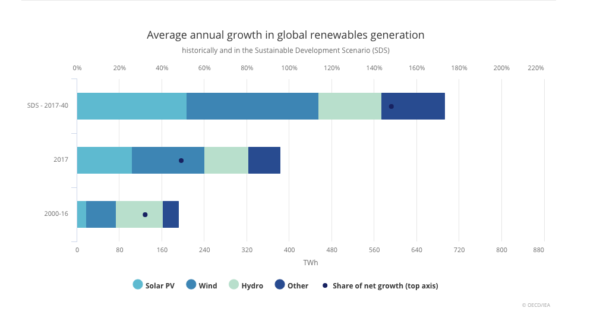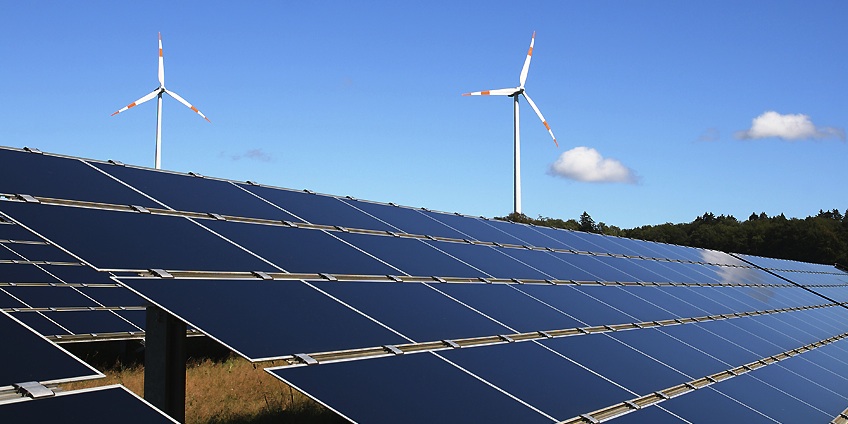As global energy demand increased in the previous year, renewables followed suit, setting new record highs.
Indeed, although the overall share of fossil fuels in global energy demand in 2017 remained at 81% – a level that has been stable for more than three decades – the International Energy Agency (IEA) reports that renewables recorded unprecedented growth in 2017, having met around a quarter of global energy demand growth.
According to the IEA’s first Global Energy and CO2 Status Report, the power sector played the most important role in the growth of low-carbon energy, with renewables-based electricity generation increasing by 6.3% (380 TWh) in 2017.
China and the United States led the charge, contributing to 50% of the increase in renewables-based electricity generation, followed by the European Union (8%), India (6%) and Japan (6%), says the IEA.
The IEA further reports unprecedented growth of wind and solar PV in 2017; with wind power accounting for the largest share of overall renewables growth, at 36%, followed by solar PV (27%), hydropower (22%) and bioenergy (12%).

Source: IEA
With new record solar PV capacity additions of over 50 GW in 2017 and a reduction in the rate of curtailment, China accounted for 40% of the combined growth in wind and solar PV.
In terms of solar PV, the accumulated capacity of which approached 400 GW by the end of 2017, the IEA notes that China’s additions in the previous year were equivalent to the total solar PV capacity of France and Germany combined, as they went up from 35 GW in 2016, and exceeded the country’s combined capacity additions of coal, gas and nuclear.
Popular content
Coming in second was the U.S., with 10 GW of solar PV added in 2017, down 30% relative to 2016, followed by India with its record additions of 8 GW, double the capacity seen in 2016.
Meanwhile, the IEA notes, global wind power capacity reached around 510 GW, as the EU saw a banner year with 15.6 GW of capacity additions, of which 3.1 GW was offshore, also a record.
Outside of the power sector, renewables heat has been growing modestly over the last years. The IEA recalls that a big change is expected to take take place in China, the world’s largest heat consumer, which announced a five-year clean heating plan focused on northern cities in December 2017 – a new policy that could significantly cut the use of coal for heating and replace it with cleaner sources, including renewables (biomass, geothermal and solar heat).
On the other side of the coin, the speedy growth of renewables in 2017 falls short of the deployment needed to meet the global climate goals in the IEA’s Sustainable Development Scenario.
According to the IEA, carbon emissions intensity in 2017 improved by less than one-third of what would be needed to fulfill the global transition towards climate goals.
This content is protected by copyright and may not be reused. If you want to cooperate with us and would like to reuse some of our content, please contact: editors@pv-magazine.com.



1 comment
By submitting this form you agree to pv magazine using your data for the purposes of publishing your comment.
Your personal data will only be disclosed or otherwise transmitted to third parties for the purposes of spam filtering or if this is necessary for technical maintenance of the website. Any other transfer to third parties will not take place unless this is justified on the basis of applicable data protection regulations or if pv magazine is legally obliged to do so.
You may revoke this consent at any time with effect for the future, in which case your personal data will be deleted immediately. Otherwise, your data will be deleted if pv magazine has processed your request or the purpose of data storage is fulfilled.
Further information on data privacy can be found in our Data Protection Policy.